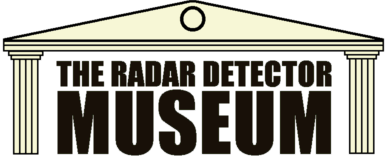
Police speed detection and enforcement has been around a lot longer than radar. Here is one account: "The use of the first known method of speed enforcement dates back to 1902 in Westchester County, New York. This system was composed of three dummy tree trunks set up on the roadside at 1- mile intervals. A police officer with a stopwatch and a telephone was concealed in each trunk. As a speeding vehicle passed the first trunk, the hidden police officer telephoned the time to the second police officer, who recorded the time at which the vehicle passed him and then computed its speed for the mile. If the vehicle was exceeding the speed limit, the officer telephoned the third police officer, who proceeded to stop the vehicle by lowering a pole across the road. The "tree trunk" method was subject to hearsay objections in court because officers had to testify regarding the time statements of other officers since there was no way to observe the vehicle over the entire distance." - Virginia Transportation Research Council "Automated Speed Enforcement Pilot Project For The Capitol Beltway: Feasibility Of Photo Radar" (1992). Here's another account: "Henry Lewis could have only dreamed about the equipment present-day police use to nab speeders. As Fort Worth's first traffic officer 94 years ago, Lewis used a watch to time how long it took horse-drawn buggies to travel between two lines painted on Main Street, Sgt. Kevin Foster said." "Foster said the history of speed enforcement in Fort Worth began at the turn of the 20th century, when officer Andrew Grimes wrote some of the first citations for "fast riding," using his eyes and judgment. Then Lewis, who was hired in 1909, began using a watch and painted stripes to measure the speed of horses, buggies and wagons on Main Street, Foster said" - Fort Worth Star-Telegram "Lasers aiding speed enforcement" (2003) |
website counter